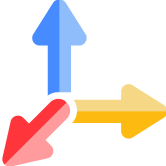Neo4j MCP Integrations
Neo4j is a graph database management system developed by Neo4j, Inc. It is a native graph database that stores data in nodes connected by relationships, providing an efficient way to query connected data.
Why this server?
Can be combined with Neo4j MCP server as mentioned in the tutorial for building a knowledge graph assistant
 AsecurityAlicenseAqualityThis server enables AI systems to integrate with Tavily's search and data extraction tools, providing real-time web information access and domain-specific searches.Last updated 5 days ago11,7161,019MIT License
AsecurityAlicenseAqualityThis server enables AI systems to integrate with Tavily's search and data extraction tools, providing real-time web information access and domain-specific searches.Last updated 5 days ago11,7161,019MIT LicenseWhy this server?
Provides tools for interacting with RushDB, a property-centric graph database built on Neo4j. Enables ingesting JSON/CSV data, performing graph traversals, aggregations, vector similarity searches, and schema discovery through a unified JSON search interface.
Why this server?
Provides integration between Neo4j graph database and Claude Desktop, enabling graph database operations through natural language interactions. It allows executing Cypher queries, creating nodes and relationships, and performing complex graph operations via natural language commands.
AsecurityAlicenseAqualityThis server enables interaction between Neo4j databases and Claude Desktop, allowing users to execute Cypher queries, create nodes, and establish relationships in the database.Last updated 25 days ago7056MIT LicenseWhy this server?
Mentioned in a tutorial about combining Tavily MCP with Neo4j MCP server to build a knowledge graph assistant
MIT LicenseWhy this server?
Uses Neo4j as the storage backend for the knowledge graph, providing unified graph storage and vector search capabilities.
AsecurityAlicenseAqualityScalable, high-performance knowledge graph memory system with semantic search, temporal awareness, and advanced relation management.Last updated 2 months ago1723379MIT LicenseWhy this server?
Provides memory-focused tools for storing, retrieving, and connecting information in a Neo4j graph database, enabling AI agents to create persistent memories with semantic relationships, perform natural language searches, and build knowledge networks with flexible labeling and temporal tracking.
AsecurityAlicenseAqualityEnables AI agents to store, retrieve, and connect information in a Neo4j graph database as persistent memory, with semantic relationships, natural language search, and temporal tracking across conversations.Last updated 2 months ago91359MIT LicenseWhy this server?
ATLAS has been completely rewritten to use Neo4j as its graph database, providing native relationship management, ACID-compliant transactions, and optimized queries for data integrity.
AsecurityAlicenseAqualityATLAS (Adaptive Task & Logic Automation System) is a Model Context Protocol server that provides hierarchical task management capabilities to Large Language Models. This tool provides LLMs with the structure and context needed to manage complex tasks and dependencies.Last updated 5 months ago13455Apache 2.0Why this server?
Enables access to Neo4j graph database through SQL-like queries for relationship and network data analysis
-securityAlicense-qualityMonday .com MCP Server by CDataLast updated 2 months agoMIT LicenseWhy this server?
Listed as a supported data source for integration, allowing access to Neo4J graph databases.
-securityAlicense-qualityThis project builds a read-only MCP server. For full read, write, update, delete, and action capabilities and a simplified setup, check out our free CData MCP Server for Cvent (beta): https://www.cdata.com/download/download.aspx?sku=TVZK-V&type=betaLast updated 2 months agoMIT License